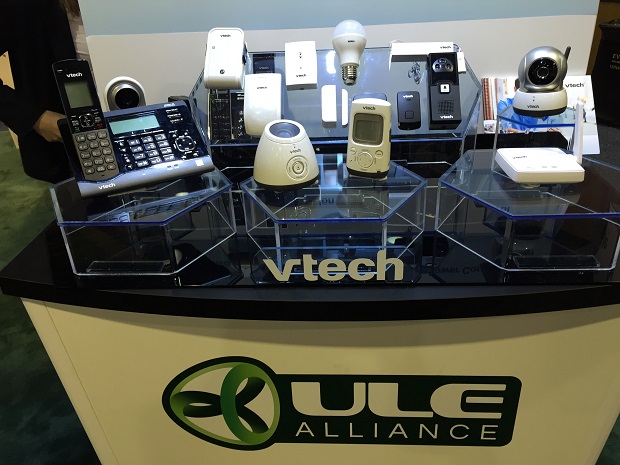New ULE standard challenges existing solutions
New Ultra Low Energy (ULE) wireless standard is set to challenge existing smart home solutions such as Z-Wave, ZigBee, Bluetooth and Wi-Fi. Within the last months, a range of ULE-based products has been launched, including control devices, fire alarms, blinds, as well as heating and cooling systems. A new certification programme is likely to increase this number in the close future.

Whilst most short range wireless technologies use the 2.4 GHz or 900 MHz frequency bands, ULE is based on DECT frequencies (1,880-1,900 MHz). In the past, these frequencies were exclusively used for cordless telephones which can be found in more than 600 million households worldwide. The restricted use of the frequency bands ensures that other products in the house don’t have a negative impact on ULE-operated devices. As it is based on DECT, the ULE standard also supports the transmission of voice and video, allowing vendors to include voice control as well as detailed announcements via the system such as warnings like “fire in the living room”; in real-time.
In January, the non-profit organisation ULE Alliance introduced a certification programme for ULE-based products. According to the organisation, certified products offer many advantages. “ULE allows the user to combine smart home components from different vendors to one network,” says the organisation’s chairman, René Kohlmann. “Pressing a button is often all that is required to integrate a security camera or the heating into the network. Once a comprehensive system has been setup, it does not only recognise who’s at home, leaving or arriving, but also manages the heating and air conditioning accordingly which helps saving energy and money - to name only one example.”
With a range of up to 50 metres within buildings and 300 metres outdoors, ULE covers longer distances than other smart home standards. Hundreds of sensors and devices can be combined to a single network via a single gateway. If a DECT gateway is already in place, a firmware update is all that is needed to enable ULE. The Ultra Low Energy standard also helps users to protect the environment: batteries of battery-powered ULE products last for up to ten years.
To prevent abuse and to protect the user’s privacy, ULE takes advantage of the Advanced Encryption Standard (AES) for electronic data. Established by the U.S. National Institute of Standards and Technology, the standard ensures 24/7 protection against un-authorised access as the encryption cannot be disabled.
By allowing users to easily combine their existing products with new purchases from other manufacturers, ULE makes smart homes more user-friendly and affordable. “With ULE, smart homes are no longer a privilege only a few people can afford,” says Kohlmann. According to him, the launch of the certification programme has led to surge in companies that want to use ULE for their products for home automation, security and climate control.
 Tillmann Braun is a freelance journalists and consultant from Stuttgart, Germany. He covers all kind of IT topics such as IT solutions for businesses and end users, M2M communication, home networks, consumer electronics and building automation.
Tillmann Braun is a freelance journalists and consultant from Stuttgart, Germany. He covers all kind of IT topics such as IT solutions for businesses and end users, M2M communication, home networks, consumer electronics and building automation.